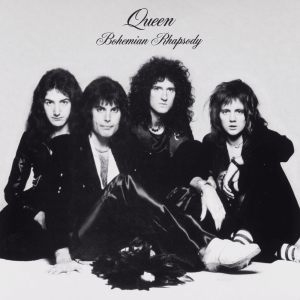
Category: Music
Title: Bohemian Rhapsody
Artist: Queen
Albums: A Night at the Opera
Released: October 31, 1975
Genres: Opera Rock, Progressive Rock, Rock
Background
“Bohemian Rhapsody” is one of Queen’s most iconic songs, released in 1975 as part of their album A Night at the Opera. Written by lead vocalist Freddie Mercury, the song defied conventional music norms with its unique structure, blending various musical styles and genres. The song became a major commercial success and is widely regarded as one of the greatest songs in the history of rock music. Its elaborate production, intricate harmonies, and operatic influences set it apart as a pioneering work in the genre.
Inspiration
Freddie Mercury drew inspiration from a wide range of sources while writing “Bohemian Rhapsody”. He was influenced by opera, classical music, and contemporary rock. The song’s lyrics are enigmatic and open to interpretation, with Mercury famously remaining tight-lipped about their specific meaning. The operatic section of the song is reminiscent of works by composers like Verdi and Puccini, while the rock elements align with the contemporary music of the 1970s. This eclectic mix of influences contributed to the song’s distinctive and groundbreaking nature.
Writing Process
The writing process for “Bohemian Rhapsody” began in the late 1960s, with Mercury developing various sections of the song over several years. The song was a labor of love for Mercury, who meticulously crafted each segment. He brought the initial idea to his bandmates, and together they worked on arranging and perfecting the piece. The song’s complex structure, featuring multiple sections with varying musical styles, was a departure from the traditional verse-chorus format, showcasing Mercury’s ambition and creativity.
Production
The production of “Bohemian Rhapsody” was an ambitious undertaking, involving extensive studio work at Rockfield Studio 1 in Wales. Produced by Roy Thomas Baker and Queen, the recording process spanned three weeks and required numerous overdubs to achieve the song’s layered sound. The operatic section alone featured 180 separate overdubs. The band used a variety of techniques and instruments to create the song’s diverse soundscape, including grand piano, electric guitars, and a full choir of multitracked vocals. The meticulous production efforts resulted in a richly textured and dynamic recording.
Music and Arrangement
“Bohemian Rhapsody” is renowned for its unique structure and diverse musical influences. The song is divided into six distinct sections: a ballad introduction, an operatic segment, a hard rock passage, a reflective coda, and two instrumental sections. It opens with a piano ballad, leading into the operatic segment with its multi-layered harmonies and theatrical flair. The hard rock section features Brian May’s iconic guitar solos, before transitioning into the reflective coda. The seamless blending of these disparate elements creates a dynamic and compelling listening experience, showcasing the band’s versatility and musical prowess.
Release and Promotion
“Bohemian Rhapsody” was released as a single on October 31, 1975. Despite initial skepticism from critics and record executives about its unconventional length and structure, the song quickly gained popularity. The band promoted the single with an innovative music video, directed by Bruce Gowers, which is often credited with helping to establish the promotional music video as a standard in the industry. The video featured the band performing the song in dramatic lighting and special effects, enhancing the song’s theatrical appeal and contributing to its widespread success.
Reception
Upon its release, “Bohemian Rhapsody” received mixed reviews from critics, but it was an immediate hit with audiences. The song topped the UK Singles Chart for nine weeks and reached the top ten in multiple countries, including the US, where it peaked at number nine on the Billboard Hot 100. Over time, critical opinion shifted, and the song has since been hailed as a masterpiece. “Bohemian Rhapsody” won numerous awards and accolades, and its popularity was reignited in the 1990s following its inclusion in the film Wayne’s World, which introduced the song to a new generation of fans.
Impact
“Bohemian Rhapsody” has had a lasting impact on the music industry and popular culture. It is considered one of the greatest songs of all time and has influenced countless artists across various genres. The song’s innovative structure and genre-blending elements challenged traditional norms and expanded the possibilities of what a rock song could be. The accompanying music video is often cited as a pioneering work in the development of the modern music video. “Bohemian Rhapsody” has been covered and parodied by numerous artists, and its enduring popularity continues to resonate with audiences worldwide.
Conclusion
“Bohemian Rhapsody” is a testament to Queen’s artistic vision and Freddie Mercury’s songwriting genius. Its groundbreaking structure, intricate production, and powerful performances have made it a timeless classic. The song remains a defining work in Queen’s catalog and a milestone in rock music history. Decades after its release, “Bohemian Rhapsody” continues to captivate and inspire, solidifying its place as one of the most iconic and influential songs ever recorded.


















Leave a Reply